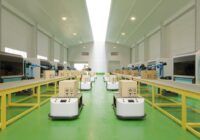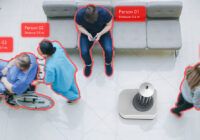The COVID pandemic has made automation urgent in many fields. The healthcare system is one such place, in our opinion. Another example is commercial cleaning robots and UV-C disinfection robots in workplaces, schools, and public places like airports. The two goals of omnidirectional movement 3-D vision for mobile robots are landscape analysis and object detection. For cross-country navigation or item recognition, terrain analysis provides a more thorough description of the surroundings.
As the field of mobile robots develops, we observe intense competition among robot makers, where inventive new techniques to better navigation while using less power and incurring reduced costs must be attained. These trends show where DreamVu can best add value to a market that is expanding quickly. We envision ourselves as becoming a crucial link in the mobile robot industry’s value chain.
Benefits of DreamVu’s Omnidirectional movement 3d Vision Systems To Mobile Robots
Precision
High-quality, precise point clouds are necessary for automated picking and placing. Robotic operations are made faster, more adaptable, and more dependable thanks to the ability of robots to recognize a wide variety of objects and surfaces when given high-resolution 3D omnidirectional movement data.
The PAL Mini is a small, omnidirectional 3D vision system with a usable depth range of 5 metres, a 360° horizontal field of view, an 80° vertical field of view, and up to 4 megapixels. PAL Mini is ideal for navigation systems in smaller AMRs and domestic robots because of its compact form. In applications where increasing the cleaning area is crucial, such as people identification in disinfection robots or wall, cliff, and stair tracking in commercial cleaning robots, PAL Mini can also be utilised as an auxiliary sensor.
Efficiency
Pick and place operations, such as detection, processing, and choosing random objects, have become simpler and more effective thanks to high-performance 3D sensors. For e-commerce, manufacturing, and logistics companies, the ability of vision-guided robots to function continually without sacrificing quality and productivity is crucial. Additionally, the automated robotic system is faster, more accurate, and more dependable at handling more parts than manual labour.
A wise addition to robotic vacuum cleaners is PAL Mini. Because of its excellent resolution and depth accuracy, it can even identify small impediments on the ground in low-lighting situations. This allows the optimal vacuum technique to be used and enhances localization performance. Because of this, robots can empty the bin consistently, resulting in consistent productivity. Robots can quickly and accurately collect minute, tightly packed objects in milliseconds because of their accurate 3D point clouds.
Reliability
In addition to accurate and reliable object recognition, reliable picking also requires an accurate interpretation of the object’s size, location, and form. Finding the best grasp spots and localising sections both depend on these characteristics. Finding the ideal grip points requires segmenting individual things and boundaries. In pick and place robotics, trueness errors resulting from scaling, rotation, and translation are important.
Safety
Industrial robots integrate extremely powerful, high-torque motors that make them capable of causing very serious injury and damage if not used properly. They are meant to perform jobs beyond the strength of humans. Industrial robots still need to be handled carefully because of their strong capabilities. Still, with 3D vision, they can be considerably safer since they can have much better situational awareness and become more aware of their surroundings. Robots can now see more clearly, work more safely, and be more aware of their surroundings thanks to improved 3D machine vision technologies. It implies that with 3D vision, industrial robots can work alongside humans or securely function independently.
For numerous industrial automation applications, passive technology is used by all of DreamVu’s cameras, making it the optimum option. The cameras on the DreamVu are built for pick-and-place robotics to reduce errors and accidents. It is perfectly suited for cooperative human-robot work scenarios because of its high accuracy.
Cost
By lowering long-term expenses and raising quality, automating repetitive tasks improves efficiency. High-quality 3D vision enables the more effective automation of a variety of labour-intensive jobs. As you save long-term human labour time for repetitive processes, automating the tasks can be quite cost-effective for the initial expenditure. It also lessens the need to continually train new workers, which helps to address the skilled labour shortage.
Conclusion
Mobile robots now have situational awareness thanks to 3D depth sensing technology, enabling them to work with people on difficult tasks. DreamVu is at the forefront of developing the next generation of visual intelligence. We are redefining how machines and humans see the environment with camera-based omnidirectional movement solutions that utilise special optics and image software to reduce system costs and provide an unsurpassed field of vision. We have developed a wide variety of 3D sensors by working with our clients to enter new markets and applications.




